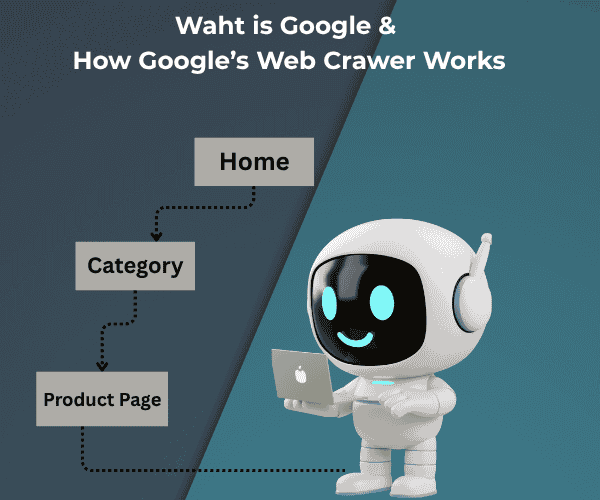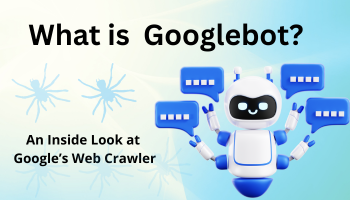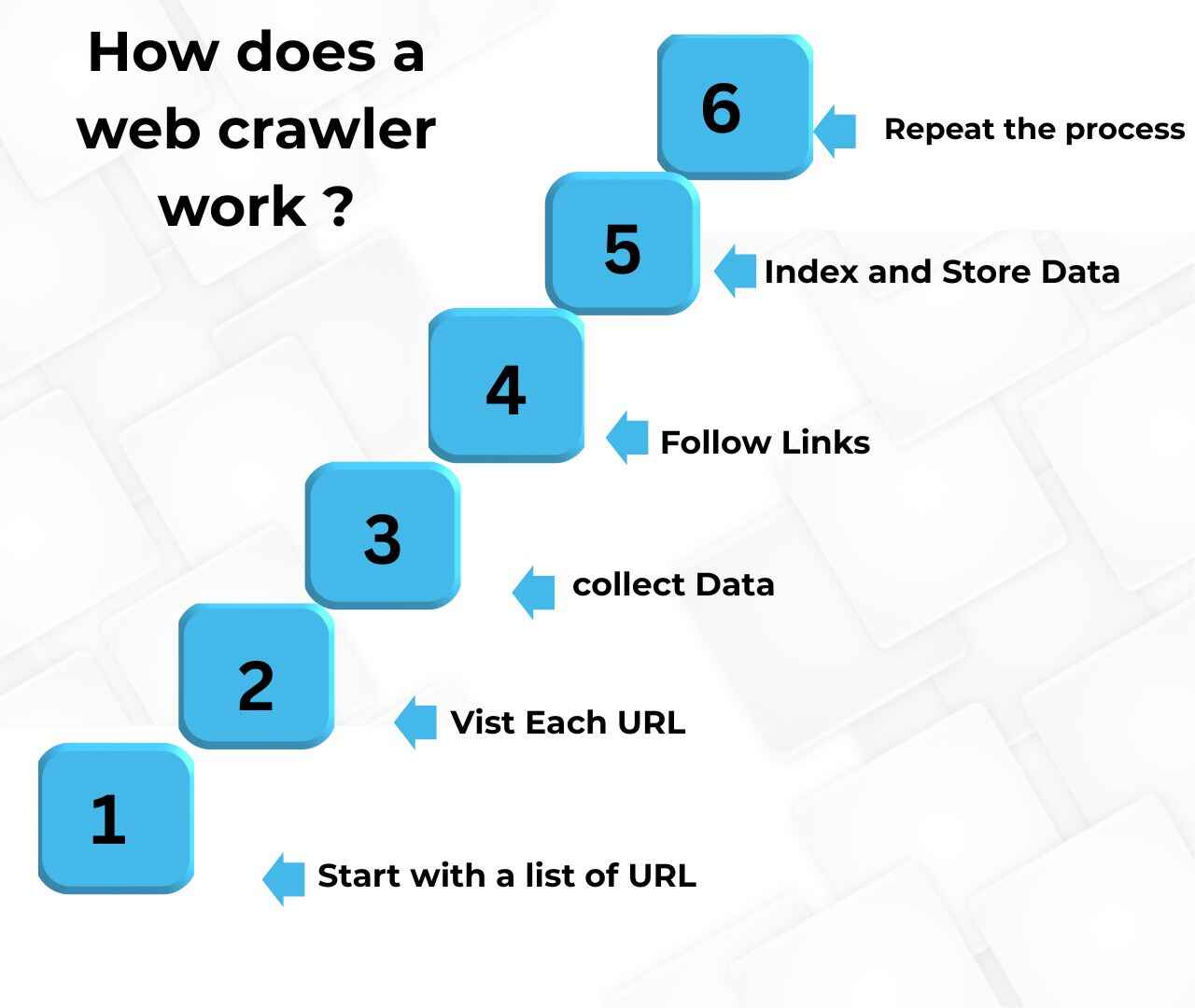
What Is Googlebot & How Google’s Web Crawler Works-
If you were looking for What is Googlebot then today’s digital world, when you search for anything on Google, you receive results from millions of web pages within seconds. But have you ever wondered how Google finds all those websites? The secret lies in a tool called Googlebot – a web crawler (also known as a spider or bot) developed by Google to explore and index content across the internet. You can also check 10 Analytics Tools to Analyze and Improve Business Performance.
Let’s break it down in detail-
What is Googlebot?

Googlebot is Google’s automated web crawling software that scans and analyzes websites on the internet. It is like a virtual robot that visits websites, reads their content, follows links, and then sends the collected data back to Google’s servers for indexing. What is Googlebot ? How Google’s Web Crawler Works.
Google uses two main types of Googlebot
Googlebot Desktop – simulates how a page appears on a desktop browser.
Googlebot Smartphone – simulates how a page appears on a mobile device (most important now due to mobile-first indexing).
Why Is Googlebot Important?
Without Googlebot, Google Search wouldn’t work. The search engine relies on it to discover new pages, understand existing ones, and update old content. Googlebot helps build the Google Index – a massive database of web content that powers all Google searches.
How Does Googlebot Work?
The crawling process involves several steps:

1. URL Discovery
Googlebot starts by crawling a list of URLs. This list contains:
- URLs submitted in sitemaps by website owners
- URLs previously discovered
- URLs found via links on other websites
What is Googlebot-It’s like starting from a few known roads and then exploring side streets, highways, and alleys from there.
2. DNS Resolution and Request
Before visiting a page, Googlebot performs DNS (Domain Name System) resolution, which means it finds the server’s IP address where the website is hosted. It then returns an HTTP message to fetch the page.
3. Crawling the Webpage
Once it accesses the webpage, Googlebot:

- Reads the HTML content
- Follows internal and external links
- Collects all the metadata (title, description, headings, etc.)
- Looks at images, scripts, and structured data (like schema markup
If the webpage contains links to other pages, Googlebot adds those to its list to crawl later.
4. Respecting Robots.txt and Meta Tags
Website owners can control what Googlebot can or cannot access using:
Meta tags (robots tag) – can be added to individual pages to instruct Googlebot not to index or follow them.
For example: html
Copy Edit
<meta name=”robots” content=” noindex, nofollow “>
This tells Googlebot: “Don’t index this page or follow links on it.”
5. Indexing
When we crawl a page, it is inspected and subsequently incorporated into the Google index. During indexing, Googlebot tries to understand:
- What the page is about (using content, keywords, structure)
- How valuable it is (based on quality, links, and authority)
- How it fits into related search queries
- What is Googlebot
The better optimized your content is for search engines (SEO), the more likely it is to rank well.
6. Rendering
Rendering means executing all scripts (like JavaScript) to see what the final visible page looks like. Modern websites often rely on JavaScript to load content dynamically, and Googlebot tries to mimic real-user rendering to understand the full page.
How Often Does Googlebot Crawl a Website?
Googlebot’s crawling frequency depends on:
- Website authority and popularity
- How often the content changes
- Server performance and speed
-
What is Googlebot- Crawl budget
the number of pages Googlebot is allowed to crawl on your site within a time period High-traffic sites like news portals may be crawled every few minutes, while smaller or rarely updated sites might only be crawled every few days or weeks.
-
How to Optimize Your Site for Googlebot
If you want your site to perform well in Google Search, you must ensure that Googlebot can crawl and index your site properly.
Here are some tips:
-
Avoid broken links and fix 404 errors.
-
Make sure that our site runs fast so that Googlebot can handle the traffic coming to the site.
-
Use structured data for better understanding of content.
-
Check your robots.txt file to ensure you’re not blocking important pages.
-
Use canonical tags to avoid duplicate content issues.
-
Make your website mobile-friendly (important for mobile-first indexing).
How to Monitor Googlebot Activity
To track how Googlebot interacts with your site, use:
- Google Search Console – View crawl stats, errors, indexing status, and more.
- Server logs – Analyze bot visits, frequency, and behavior.
- URL Inspection Tool – See how Googlebot sees and renders a specific page.
-
Conclusion
What is Googlebot-Googlebot is the foundation of how Google understands and organizes the web. It quietly works in the background, crawling billions of pages every day, ensuring that users get the most relevant and up-to-date information in search results.
As a website owner or content creator, understanding What is Googlebot & how Googlebot works can help you optimize your site, fix visibility issues, and improve your SEO performance. By making your content easily accessible and understandable to Googlebot, you increase your chances of showing up on the first page of Google – which is where most users click.



2 Comments
[…] In the ever-evolving world of SEO, website indexing remains a foundational factor for ranking on Google. If your site isn’t indexed, it simply doesn’t exist in the eyes of search engines. With the advancements in Google’s algorithms, especially in 2025, many site owners are struggling with website indexing despite having quality content and responsive designs. As you can also check what is Googlebot & How Google’s Web Crawler Works in 2025. […]
[…] As the high-speed digital economy era we are living evolves, companies now move away from old-style advertising techniques towards something more actionable. One of the best means to make the move is Performance-Based Marketing (PBM) — an environment where you only pay for quantifiable outcomes in the form of clicks, leads, or transactions. By doing it this way, all your marketing dollars are directed to concrete outcomes. You can also check What is Googlebot & How Google’s Web Crawler Works in 2025 […]